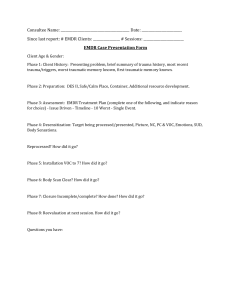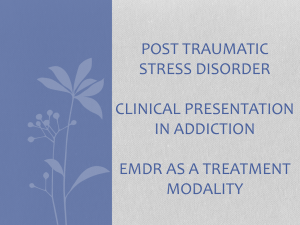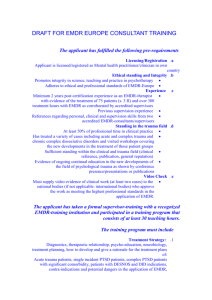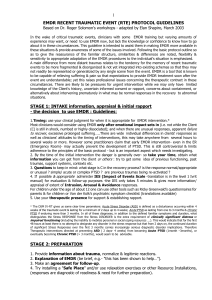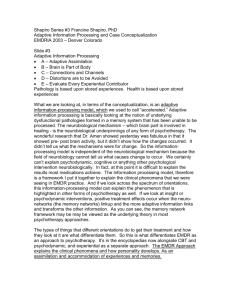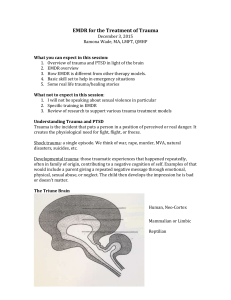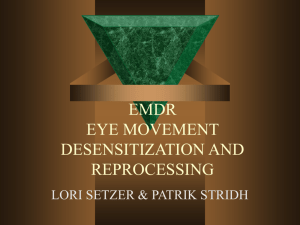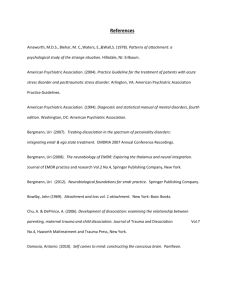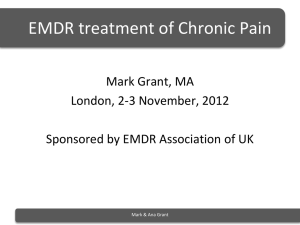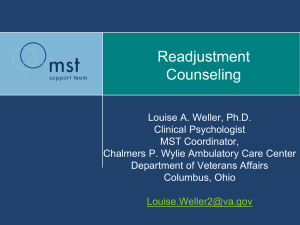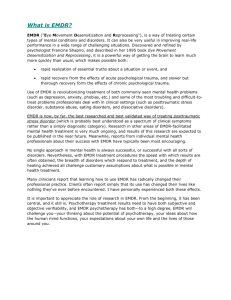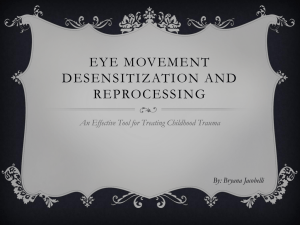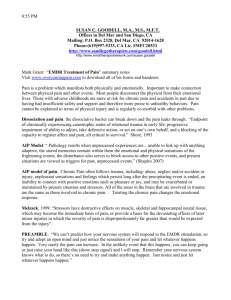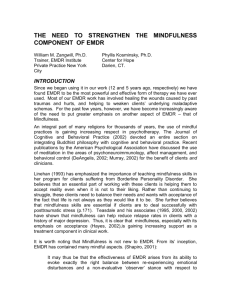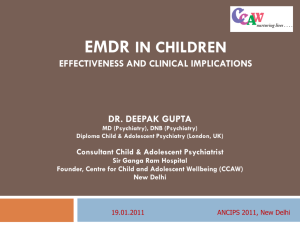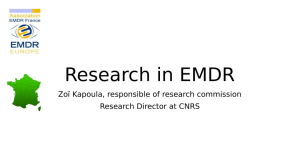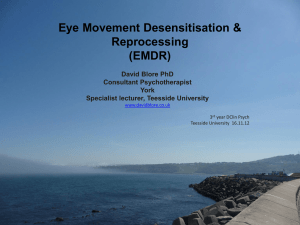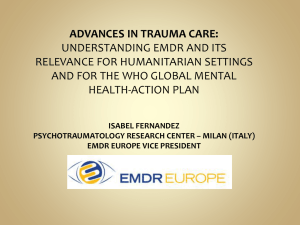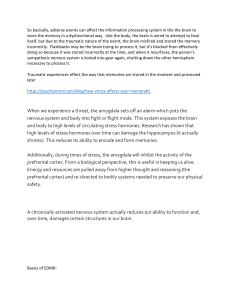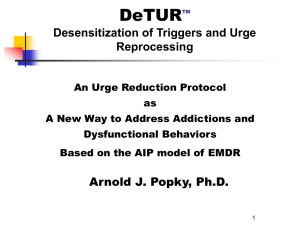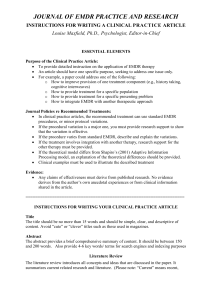Eye Movement Desensitization & Reprocessing (EMDR)
advertisement
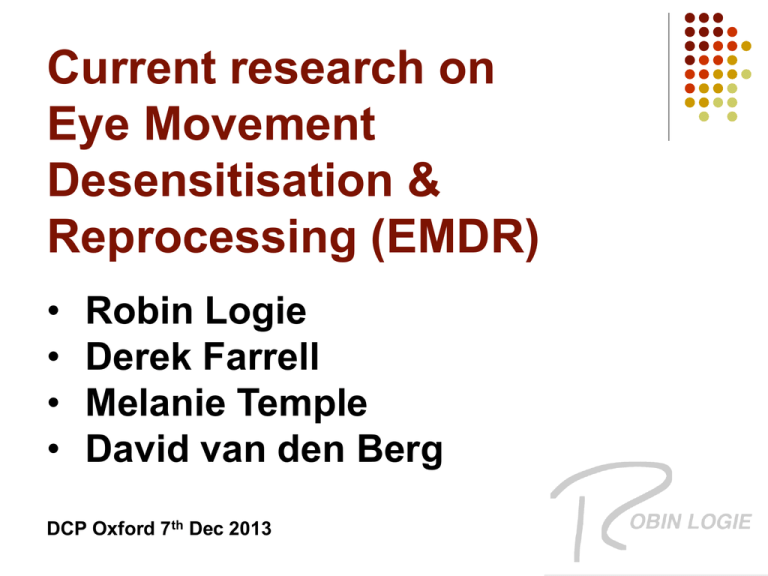
Current research on Eye Movement Desensitisation & Reprocessing (EMDR) • • • • Robin Logie Derek Farrell Melanie Temple David van den Berg DCP Oxford 7th Dec 2013 History of EMDR Francine Shapiro 1987 – walk in the park 1989 – Journal of Traumatic Stress RCT PTSD Trauma based therapy trauma or other unresolved life events that cause psychological disorders addresses trauma/life event directly PTSD obvious starting point – specifically relates to trauma Most psychological disorders relate to trauma/life event Differs from other trauma based therapies Integrates memory/image of ‘worst moment’ current negative cognition eg ‘I’m not safe’ bodily sensation Combined with bilateral stimulation Procedure: The 8 phases of EMDR 1. 2. 3. History-taking Preparation (eg relaxation, ‘safe place’) Assessment Assessment Specific image Current negative belief (Negative Cognition) Desired positive belief (Positive Cognition) e.g. ‘I am helpless’ e.g. ‘I am in control’ Validity of Cognition (VOC) Emotion Current level of disturbance (SUD) Location of emotion Procedure: The 8 phases of EMDR 1. 2. 3. 4. 5. 6. 7. 8. History-taking Preparation (relaxation, ‘safe place’) Assessment Desensitisation Installation Body scan Closure Re-evaluation Theoretical rationale Adaptive Information Processing (Solomon & Shapiro 2008) Inadequate processing of info re distressing experiences EMDR achieves integration Training & accreditatation Europe EMDR Association Standardises training courses (7 days) Accreditation Further information EMDR Association UK & Ireland Humanitarian Assistance Programme www.emdrassociation.org.uk www.hapuk.org Robin Logie www.robinlogie.com info@robinlogie.com Active ingredients of EMDR Eye movements: interfere with working memory processes (van den Hout et al, 2011) Makes memory less vivid, less emotional Enhances processing because less overwhelmed link into the same processes that occur during REM sleep (Stickgold, 2002) EMs induced relaxation and/or orienting response Which disorders? EMDR focuses on trauma Post Traumatic Stress Disorder (PTSD) Any disorder related to trauma Accident Bereavement Survivor of abuse Trauma may not be initially apparent Not neuro/organic disorders eg psychosis, manic depression EMDR with children Simpler than other forms of therapy Less abreaction Involves parents Same as adult protocol ‘minimal creativity’ Simplified as necessary for child Alternatives to eye movements eg omit cognitions (child < 5) eg auditory ‘clicks’, hand taps, drumming Narrative approach Training Need to be fully trained & experienced therapist before EMDR training Basic, Part 1: 3 days Intermediate, Part 2: 1 day Advanced, Part 3: 3 days Children: Levels 1 and 2 Accreditation Consultant - supervision
